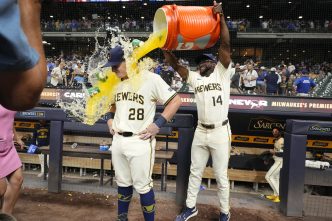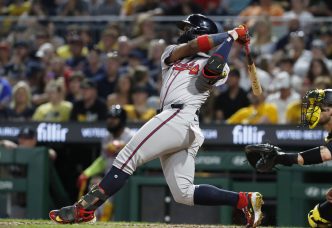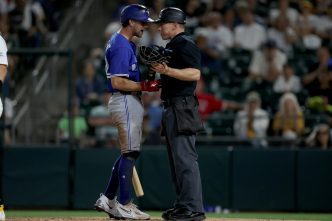Major League Baseball (MLB) is consistently seeking ways to enhance the game, focusing on improving its pace and ensuring a level playing field. We’ve seen significant changes like the implementation of the pitch clock and restrictions on defensive shifts, and now, looking ahead to the 2026 season, there’s a noteworthy proposal on the table. MLB Commissioner Rob Manfred has suggested the introduction of an automated challenge system for balls and strikes, allowing teams to use two challenges per game, initiated by either the hitter, catcher, or pitcher. This system aims to ensure that pitch calls are accurate, with real-time electronic analysis helping to verify each decision. If a call is overturned, the challenging team retains their challenge—a key point that could have major implications for teams across the league.
So, what does this mean for Toronto Blue Jays fans? There’s a mixed bag of excitement and concern brewing with this potential change. Let’s break it down.
At the heart of this conversation is Alejandro Kirk, one of the premier catching framers in baseball over the last few seasons. His ability to make borderline pitches look like strikes has been nothing short of impressive. Kirk has consistently ranked among the top five catchers in framing metrics, a skill that could face scrutiny under the new system. This year, he leads Major League Baseball with an exceptional 49.3% strike rate on pitches he’s framed, racking up six framing runs according to Baseball Savant. His contributions, along with those from fellow catcher Tyler Heineman, have provided a notable advantage for the Jays.
However, this advantage may be put to the test with the introduction of the automated challenge system. Opposing teams could strategically deploy their challenges to counter Kirk’s elite framing skills. If they succeed, they could effectively negate what has been a key asset for the Blue Jays. The retention of challenges after successful calls raises the concern that teams might exploit this to chip away at Kirk’s effectiveness, continually testing him with challenges and dialing down his impact behind the plate.
While one could argue that this new system might balance the scales, potentially benefiting Blue Jays hitters by allowing them to challenge missed calls, recent history suggests that might not be the case. Star players like Vladimir Guerrero Jr. and Bo Bichette haven’t been among the leaders in getting calls in their favor; that distinction has generally gone to other names across the league. As such, introducing this advanced technology might end up working against the Blue Jays rather than leveling the playing field.
In the end, Blue Jays fans may find themselves leaning more towards concern with this proposed rule change rather than excitement. With the automated challenge system on the horizon, it presents both a challenge and an adjustment period that could fundamentally alter the dynamic of their game strategy. How the Jays adapt to this shift will be crucial as they seek to maintain their competitive edge in the ever-evolving landscape of Major League Baseball.







